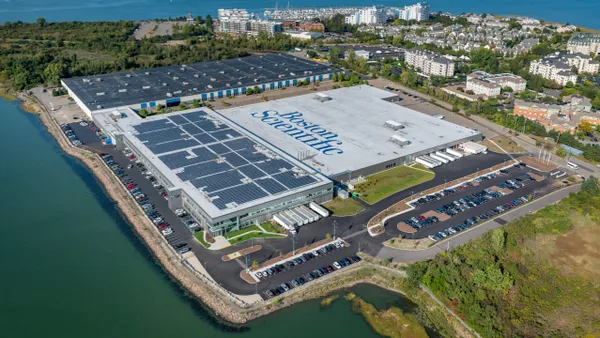Dive Brief:
- Researchers at Northwestern University and Washington University School of Medicine have developed the first biodegradable nerve regeneration device and tested the implant in rats.
- The thin, flexible wireless device wraps around an injured nerve in the leg and delivers electrical pulses to accelerate nerve regrowth, then absorbs into the body after two weeks.
- The scientists found that the rats recovered more nerve signaling and muscle strength with additional days of electrical stimulation. The device has not been tested in humans.
Dive Insight:
It is standard practice in nerve injury cases requiring surgery to administer electrical stimulation during the procedure to speed healing of the nerve. But it was not known whether a longer period of stimulation would make a difference.
"With this device, we've shown that electrical stimulation given on a scheduled basis can further enhance nerve recovery," study co-author Wilson Ray, an associate professor of neurosurgery, biomedical engineering and orthopedic surgery at Washington University, said in a press release.
A wireless transmitter powers the device from outside the body. The researchers were able to control the number of days the device functioned before being absorbed into the body by varying the composition and thickness of the materials. The ability of the device to degrade eliminates the need for a second procedure to remove the implant, reducing risks associated with surgery as well as with permanent implants, according to the study, which was published in the journal Nature Medicine.
The hope of reducing risks associated with permanent device implants drove stent makers such as Abbott Laboratories in recent years to develop absorbable versions of the tiny wire mesh tubes used to prop open clogged coronary arteries. But Abbott in September 2017 announced it would stop selling its Absorb bioresorbable stent after the device failed to catch on with interventional cardiologists.
Longer-term data showed an increased risk of adverse cardiac events in patients who had received the Absorb device, and FDA cautioned physicians about its continued use. Abbott has said it will continue to work on a next-generation bioresorbable stent.
The idea of transient electronic devices has been a "grand quest" in materials science for many years, said study co-author John Rogers of Northwestern. In the nerve stimulation study, the device was used to provide one hour a day of electrical stimulation to the rats for one, three or six days. The longer the treatment, the better the outcome in the rats, the researchers said. No adverse biological effects from the device or its reabsorption were found.










